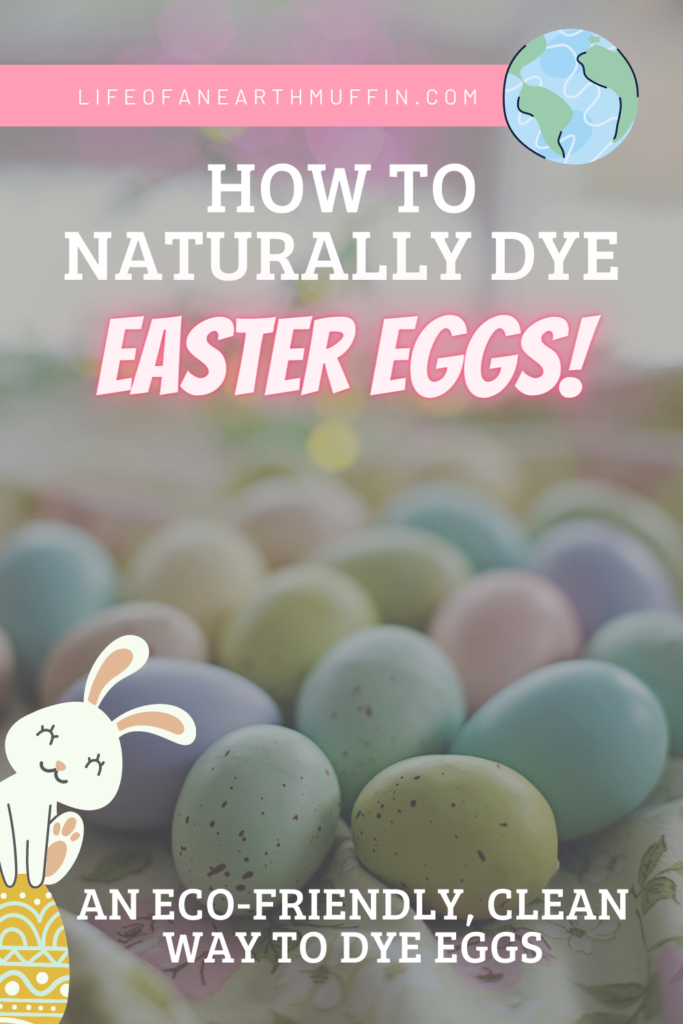Hey earth muffins! Easter is less than a week away! Hopefully all of your plans are in place so that you can enjoy the holiday. This week is full of Easter preparations… Which means lots of eggs are getting dyed! Did you know you can naturally dye your Easter eggs? Instead of buying a dye kit (full of plastics and neon shades of the rainbow), opt to dye your eggs at home! Natural dyes are better for you, better for the planet, and look much more rustic and –well– natural. Keep reading for two of the best ways to naturally dye Easter eggs!

Option 1: Dip dye the eggs
This method is similar to the dye kits you can purchase this time of year. Instead of using a dye tablet all you have to do is concoct some dyes. The basic recipe is this:
1 cup of water + splash of white vinegar + natural dye ingredient (more on that later)
Simmer these ingredients on the stove for about 20-30 minutes, strain into a mason jar (or bowl) and let cool. Once the mixture has cooled significantly (slightly warm is still okay), pop your boiled eggs in the dye until they are the color you desire. The longer they stay in, the darker they will become! When your eggs look good, carefully scoop them out of the dye and let dry.
There are tons of food, spices, and herbs that can be used to dye your eggs. Here are some popular choices (but don’t be afraid to do some experimenting too!):
| Turmeric | Yellow |
| Beets | Pink |
| Red cabbage or blueberries | Blue or purple |
| Coffee or tea | Brown |
| Red onion skins | Red or purple |
Option 2: Dye the eggs as they boil
Another great way to naturally dye Easter eggs is to dye them as the eggs cook. This is a popular traditional method of dyeing eggs – add some onion skins or beets into the water with the eggs as they boil. The water should turn color and dye the eggs! Check out Pinterest for specific recipes on doing this, (but you really can’t mess it up as a lot of things color water when they are boiled). After the eggs are cooked, carefully scoop them out and let them dry before enjoying with your Easter treats.

There you have it – two of the best ways to naturally dye Easter eggs! This is a great way to have a zero waste Easter, as it allows you to avoid unnecessary packaging in those dye kits. Plus, it is just fun to create some traditionally dyed Easter eggs! How will you be celebrating your Easter? Comment below and let me know your plans!
Love,
Jenna ♥



How wonderful! You are so creative. I don’t dye Easter eggs anymore, but I will definitely pass this along to those who do still dye them.